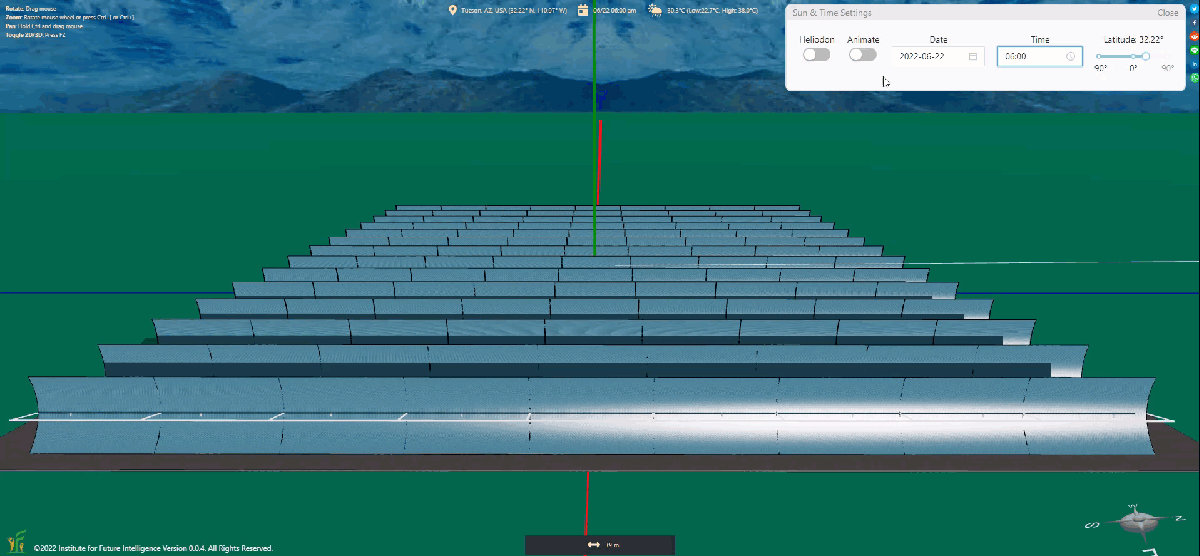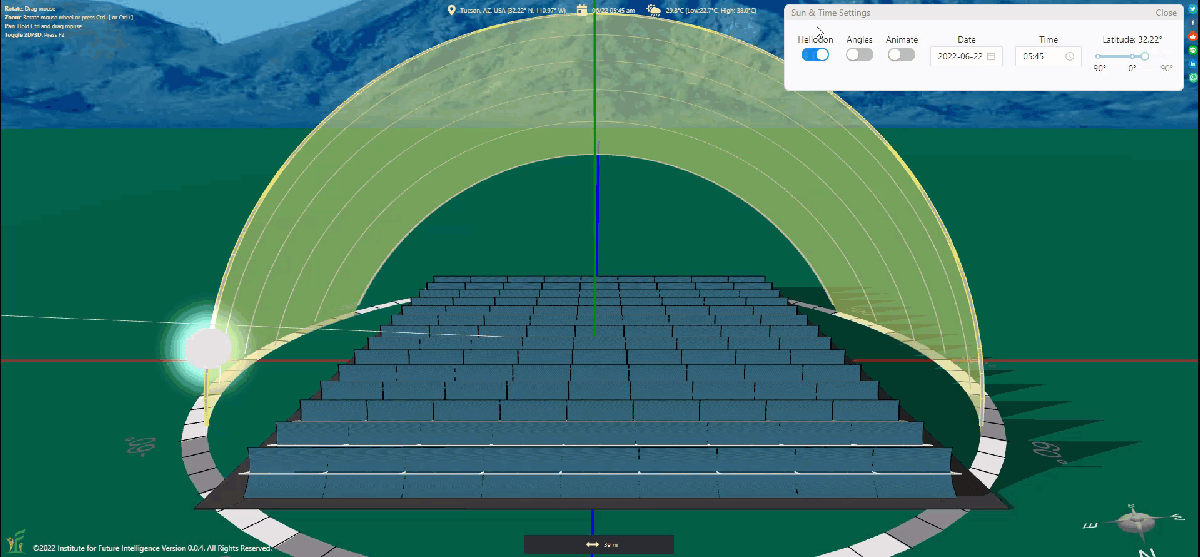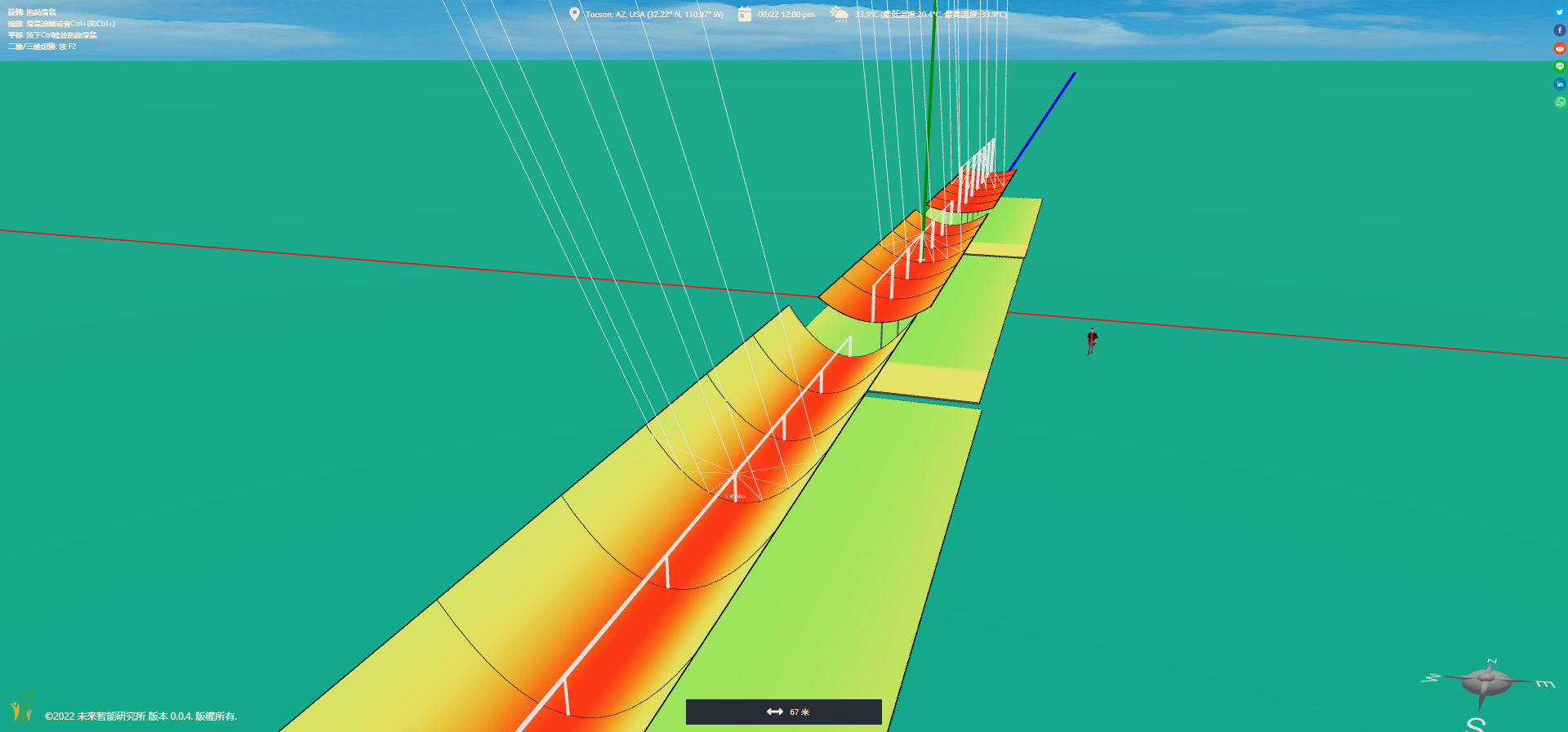Modeling and Designing Parabolic Troughs in Aladdin
By Charles Xie ✉
Listen to a podcast about this article
Aladdin can be used to design both photovoltaic and concentrated solar power. In this article, I will show you how you can model one of the most common concentrated solar power (CSP) collectors — parabolic troughs. An Aladdin model of an array of parabolic troughs is embedded as follows for you to see what they look like.
Live model above (view in full screen)
Animating the movement of parabolic troughs
Parabolic troughs typically rotate around the north-south axis from east to west throughout a day to follow the sun, as illustrated below.

North-south alignment: A view from east
At low latitudes, they can also rotate around the east-west axis to follow the sun (shown below). But this configuration is uncommon.

East-west alignment: A view from north
Analyzing the outputs of parabolic troughs
With Aladdin, you can calculate the daily and yearly outputs of each row of parabolic troughs and their totals using "Analysis > Parabolic Trough" submenu. You can also use the heatmap tool to visualize the distribution of solar energy. Note that, the solar radiation heatmap includes indirect radiation that cannot be harnessed by a CSP collector such as a parabolic trough because we cannot focus indirect radiation that travels in random directions (in comparison, a photovoltaic solar panel can collect both direct and indirect solar radiation).

Analyzing the total output of a day
Thinking about design
Notice that the difference of irradiance in different parts of a parabolic trough. The energy density gradually decreases as the distance from the center increases. The more curved a parabolic trough, the more significant the drop. However, the total energy captured by the troughs is the same. This is because they have the same aperture width and the light travels exactly the same distance from the point it strikes the trough surface to the point it reaches the receiver at the focus (as if all light were effectively intercepted by the directrix plane of the parabolic trough that always faces the sun). So a more curved design may be less efficient in terms of material and manufacturing costs as it uses more materials and is more difficult to make. On the other hand, a less curved design requires installing the absorber tube at a higher position, which costs more to build. Exactly what the latus rectum should be depends on how we balance the costs of these competing factors.

Heatmaps of parabolic troughs reveal advantages and disadvantages of different designs
